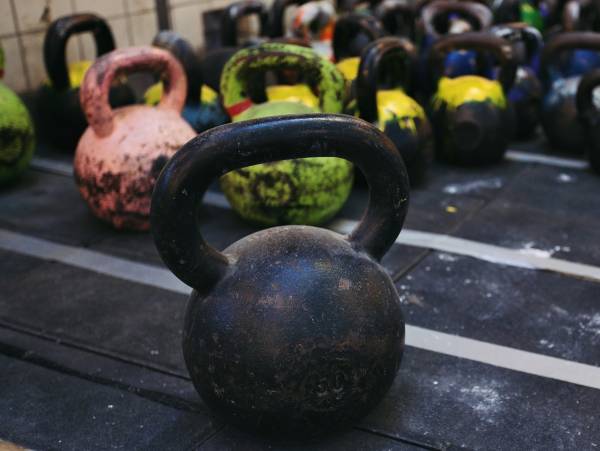The kettlebell rules when it comes to developing strength endurance. While the barbell rules for maximal strength development, the kettlebell is king of the hill when it comes to that gritty stamina required for fighting.
The Gladiator Complex
Teaching at an RKC recently, one of our instructors used the following complex to showcase exactly how helpful kettlebells can be in developing elite levels of strength and conditioning. RKCII Gabriele D’Angelo was on the Italian Taekwondo team for eight years fighting all around the world. He used this complex to develop the strength and mental toughness needed to fight on even when fatigued.
When I asked him what he called it – because all kickass workouts need names – he told me it was called, “the gladiator complex.” It develops the posterior chain needed for hard kicks, the grip strength to muscle your opponent around, total body strength, and the mental fortitude to face down fatigue.
“Complexes have a way of sneaking up on you, and before you know it you’ve hit rock bottom and can barely open your eyes.”
The concept is simple. Get two kettlebells (for the RKC event we had everyone use 24kg bells). Every round will always be ten reps, but it is how those ten reps are made that changes from one round to the next. Just like a fight, each round gets harder and harder so you are working the hardest when you’re the most tired.
Here’s the breakdown:
- Round 1: 10 double swings
- Round 2: 8 swings + 2 cleans
- Round 3: 6 swings + 2 cleans + 2 squats
- Round 4: 4 swings + 2 cleans + 2 squats + 2 presses
- Round 5: 2 swings + 2 cleans + 2 squats + 2 presses + 2 squats
Take a two-minute break and begin again.
Gabriele told me he would work up to five full circuits getting ready for big competitions and found that it helped him get in the shape needed for international-level fighting. Between each group of ten reps, take a short break – about the same length of time it would take a partner to do the same moves. If you do this workout with a partner, make sure to keep it strictly “I-go-you-go” and not let extra rest creep in.
Be careful with doing many rounds right from the beginning. Complexes have a way of sneaking up on you, and before you know it you’ve hit rock bottom and can barely open your eyes. Like with all training, this workout is most beneficial with an eye for smart programming.

A Six-Week Scheme
Start by performing the gladiator complex three times per week. Wednesday will be the heaviest day in terms of workload, with Friday being the lightest and Monday being the medium day.
Here’s the scheme for six weeks leading up to an event:
I would suggest that rugged men would use 24kg kettlebells and that women would use 12 or 14kg (because the press is often a weak link for many women you will be limited by what you can press). If you’re currently unable to use the target weights, then you’ll need more time working on maximal strength. After all, there’s no point developing strength endurance if you don’t have any strength.
“If you’re currently unable to use the target weights, then you’ll need more time working on maximal strength. After all, there’s no point developing strength endurance if you don’t have any strength.”
Use the gladiator complex at the end of each workout. Prior to the complex, perform your normal strength routine, which should be focused on heavy, basic lifts. Don’t try to get out of breath during your heavy sets – save that for the complex. Also, take your time with rest periods to allow yourself to use as much weight as possible.
Stop all maximal strength work in week five, the week before your competition, to allow time for your body to fully recover and bring everything to a peak for game day.

Take It Up a Notch
If you really want to kick things to another level, add regular fartlek running on the non-strength/complex days. Perform 80% of the running at an easy pace – I suggest nasal breathing only to ensure you don’t work too hard – and then go all out for intervals for the remaining 20% of the run. So, in a thirty-minute run, you would run easy for 24 minutes with six minutes of hard intervals thrown in.
Here’s what it might look like:
- Easy run – 12 minutes
- Intervals – 12 x 30 seconds hard, followed by 30 seconds easy
- Easy run – 6 minutes
Two to three runs like this each week on top of your strength work and the gladiator complex and you’ll be in peak fighting shape.
Related Articles:
- The Beauty of Suffering in Kettlebell Sport
- Training Kettlebells: Why You Shouldn’t Be Scared
- What’s New On Pulse Beat Fit Today
Photos courtesy of Shutterstock.






